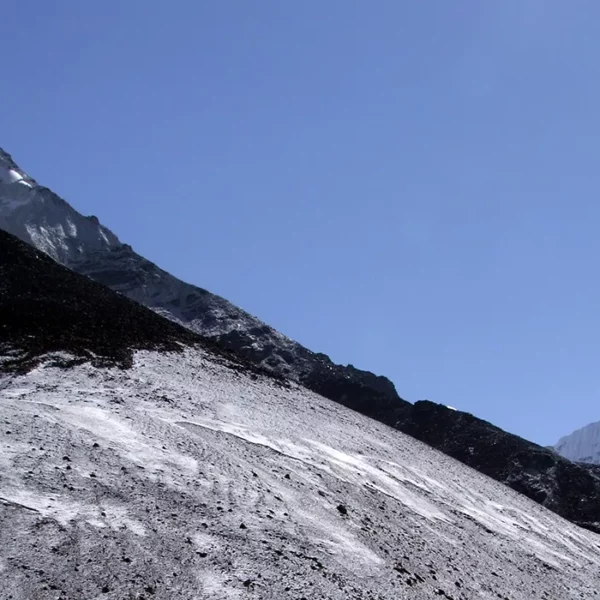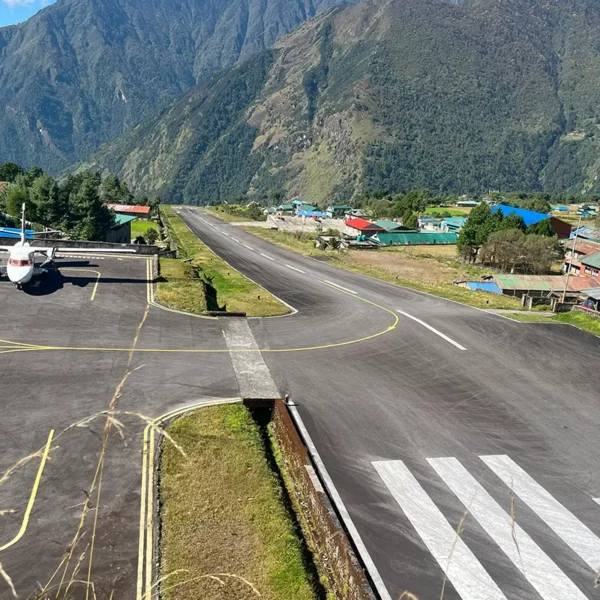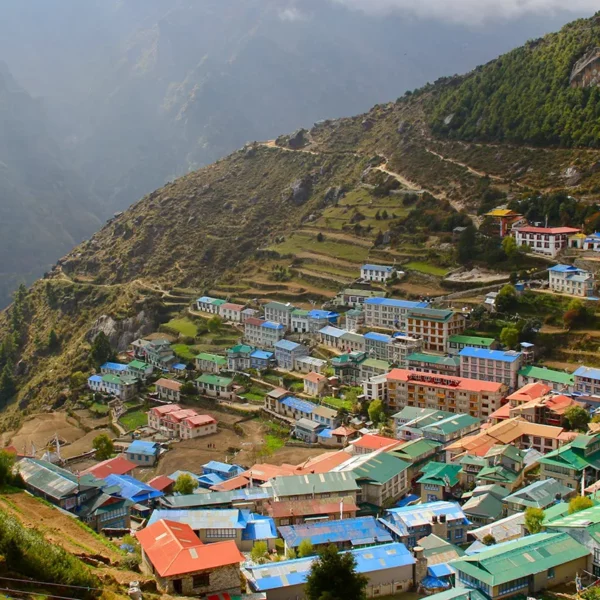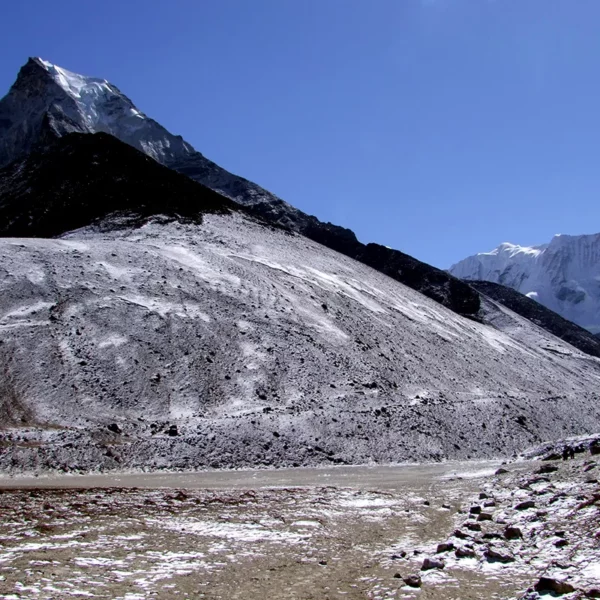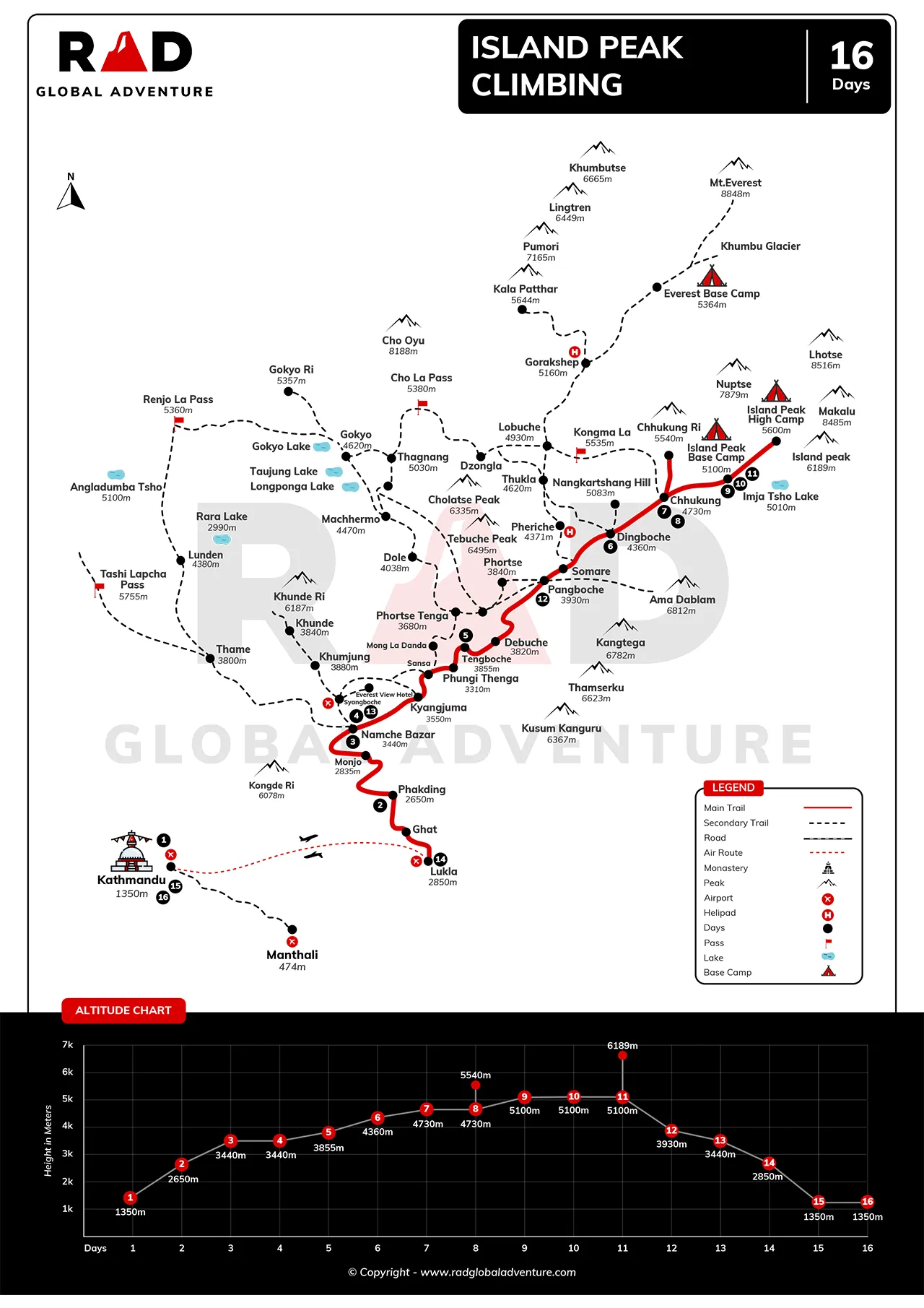Is this trip beginner-friendly?
The Island Peak Climbing package is appropriate for novices because the hike is moderately strenuous. However, of all the days on the 16-day program, the summit push is the most difficult. So, if you are a beginner with no experience at all, you must be well-prepared, have basic mountaineering training, and have strong determination to complete the journey.
Private trip vs Group Joining
Depending on your interests, you can either go on a private excursion or join a group. While group tours provide camaraderie, teamwork, and shared expenses, private trip offer more individualized experiences and the opportunity to travel at one’s own pace. Both options provide the same adventure, differing only in comfort and luxury.
Trip Extension
The Island Peak Climbing cost package can be easily extended to explore more of the Himalayas in the Solu Khumbu region. You can extend your side trips to Gokyo Lakes, Everest Base Camp, or other Sherpa villages in the area. If you want a comfortable journey, you can also take a Kathmandu Valley sightseeing tour after returning to Kathmandu. Additionally, you can enjoy the wilderness in Chitwan National Park and engage in daring activities like bungee jumping and paragliding in Pokhara.
Solo trek
Solo trekking to Island Peak is only possible with a guide from a registered travel agency. This will guarantee your safety, that the path will be navigated appropriately, and that you will abide by the rules and regulations of Nepal while traveling on your own. Solo trekking provides you with more solitude and time to appreciate the Himalayan grandeur of the Khumbu region at your own leisure.
Photography & Drone Rules
You can freely capture natural landscape photographs while embarking on the 16-day Island Peak Climbing itinerary. The photography that you capture of stunning mountains, cultural moments, villages, and local people will be your memories that will live with you forever. However, you need special permission from the Civil Aviation Authority of Nepal to use drones, and they are strictly regulated in Sagarmatha National Park. Please keep in mind that you have to respect privacy and request permission to take photos or videos in the villages and monasteries.
Cultural Festivals on the Trail
There are numerous cultural festivals along the trail, including Dashain, Tihar, Mani Rimdu, and local celebrations in Sherpa villages, depending on the time of year you visit Nepal for the Island Peak Climbing cost package. These special festivals will make your journey both a cultural and a natural exploration, which is priceless.
Tips for First-Time Nepal Visitors
If you are a first-time visitor, you should definitely carry cash in local currency for your personal expenses, as banks and ATMs are not available after Namche Bazaar. Similarly, you should pack correctly and dress in layers to stay warm and cozy in the mountains. Besides this, respect local people and follow your guide’s instructions to ensure a stress-free and pleasant hiking journey.
Typical Daily Routine on the Trek
First of all, each day of this trip to Island Peak will start with a proper breakfast at the teahouse where you spent the night. As you trek through gorgeous Himalaya scenery, you will come across not only easy paths but also some challenging climbs along with cultural visits to the Sherpa villages.
You will have lunch on the way to the next overnight stop at a trail teahouse. By the afternoon, you will reach your overnight destination, where you can explore, acclimate, and prepare for the next leg. You will spend your evenings savoring a tasty dinner and interacting with the locals.
Mental Preparation & Trekking Mindset
The trekker’s mindset is one of the most important things that lead to success at Island Peak. Patience, adaptation, and concentration will carry you through the long marches, hard climbs, and ever-changing weather conditions. Set your goals, do the mountain at your own pace, and calm yourself when it comes hard. A strong and positive cheerful energy may just give you all the endurance you may need and also the capacity to be safe up there-angle making the whole Himalayan experience all the more rewarding and fun.


